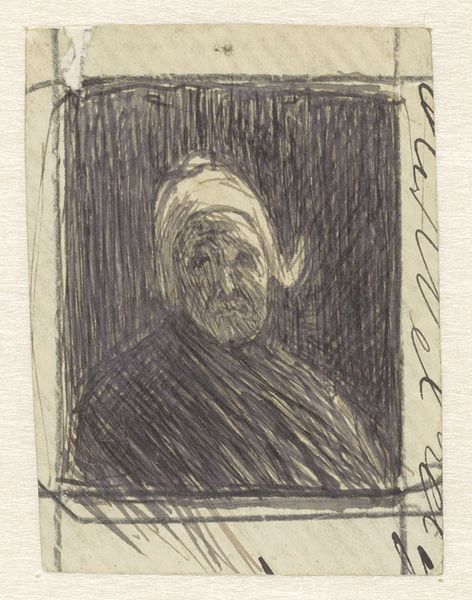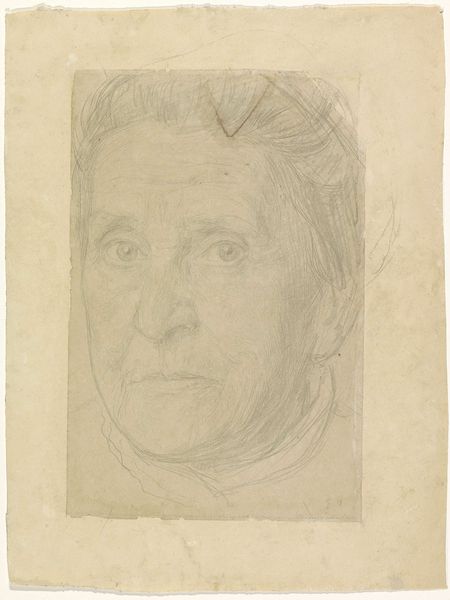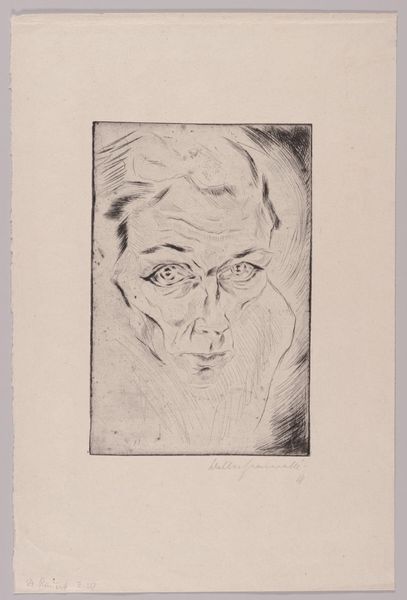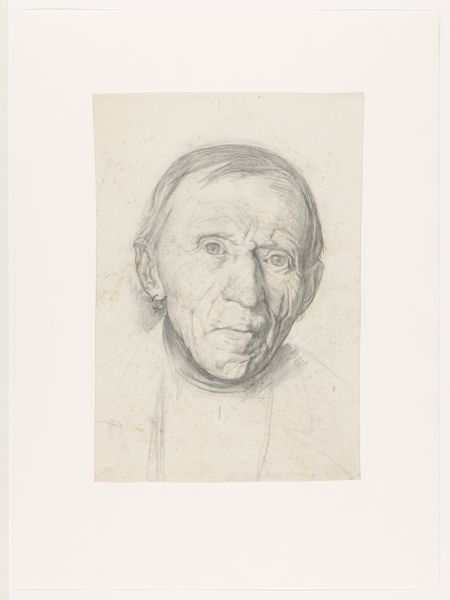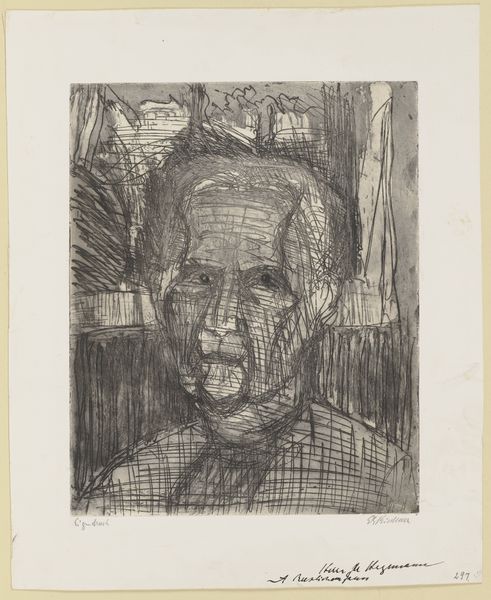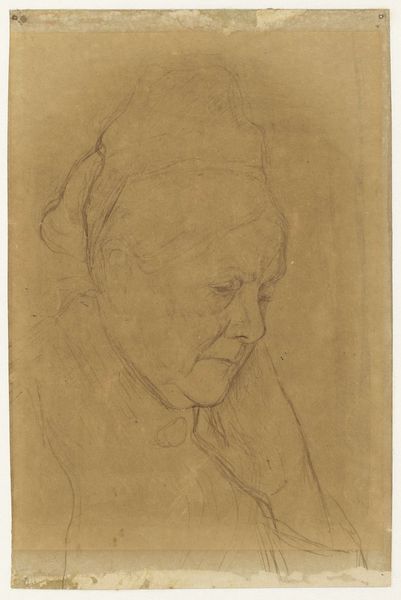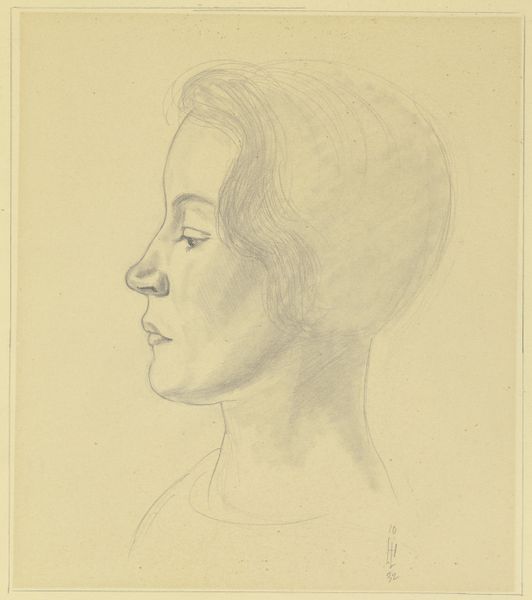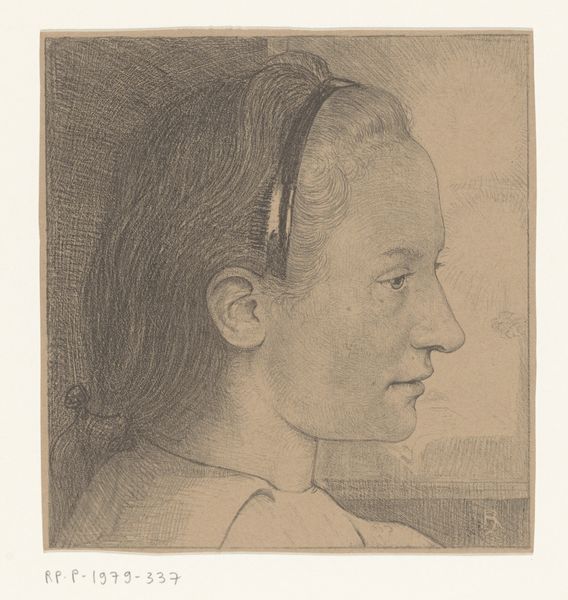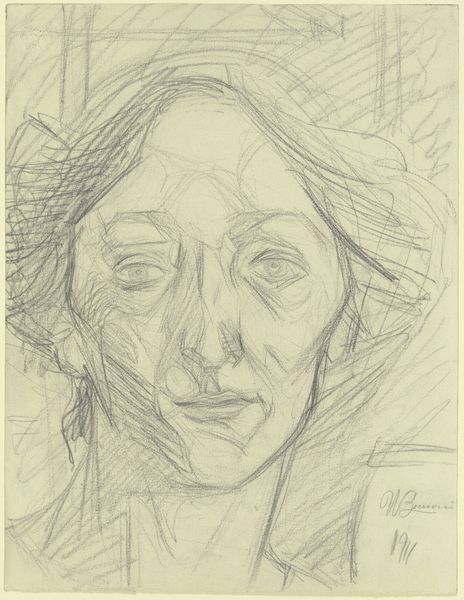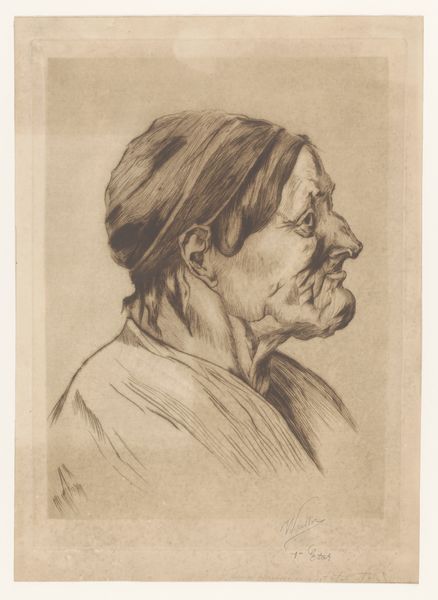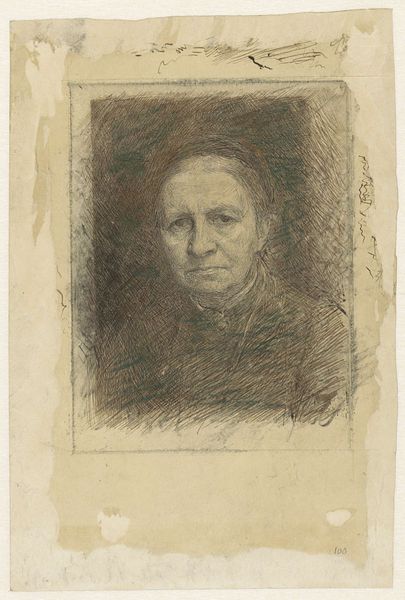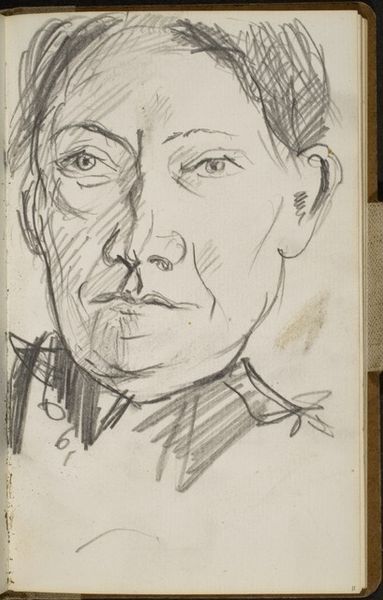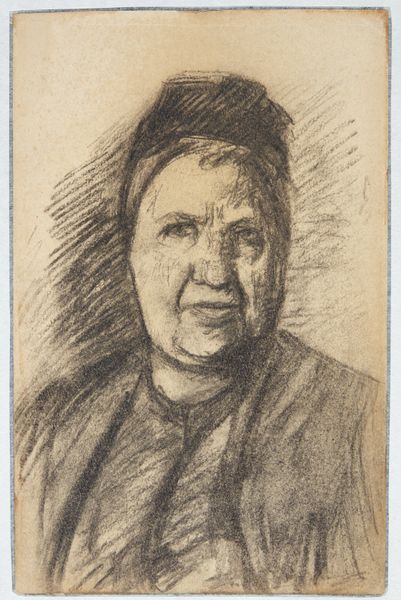
drawing, pencil
#
portrait
#
drawing
#
caricature
#
pencil drawing
#
pencil
#
realism
Dimensions: height 450 mm, width 360 mm
Copyright: Rijks Museum: Open Domain
Editor: This is Jan Veth’s 1906 pencil drawing, “Portret van Barendina Hermina Muhring.” It's held at the Rijksmuseum. I’m struck by the raw quality of it, you can almost feel the artist working. What stands out to you? Curator: Ah, Barendina! She appears to be pondering something profound. The artist really captured something with such simple lines. It's more than just a portrait; it feels like a glimpse into her inner world. I’m drawn to the contrast between the loosely sketched frame and the more detailed rendering of her face, the soft modelling that hints at her humanity. Doesn't it suggest a kind of… unfinished, but beautiful truth? Editor: That’s beautifully put! I didn't notice that the lines feel… vulnerable? Did Veth specialise in portraiture? Curator: Veth was incredibly skilled. His drawings celebrate the small rebellions of the spirit. You could call him a 'truth teller', but a kind one, capturing likeness but also hinting at what makes the person *them*. Look at the light in her eyes – do you think he sees wisdom? Determination? Or maybe a touch of melancholy? Editor: I see a bit of everything, actually. There's strength, but definitely a hint of sadness. It’s powerful how much emotion can be conveyed with just a pencil. Curator: Precisely. A pencil, yes, but also the soul of the artist finding connection. The sketch seems less concerned with perfection, and more attuned to an essential reality, don’t you think? A negotiation of both presence, and absence, within representation itself. Editor: It's definitely made me think about portraiture differently. I usually focus on the technical skill, but now I see there's so much more to it. Curator: Exactly. There’s the life breathed into something…the conversation between subject and artist. It can offer profound insights, really.
Comments
No comments
Be the first to comment and join the conversation on the ultimate creative platform.
